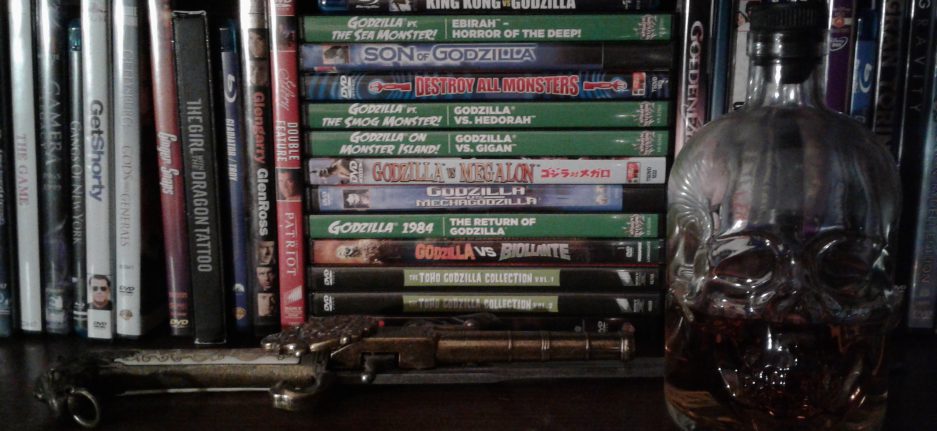One good kaiju outing deserves another, as they always say (so long as melty chocolate-covered pretzels aren’t involved…), so we’re gonna stay in Japan today to take on a film that’s been on my to-see list since the middle of college, 1994’s Orochi, the Eight-Headed Dragon.

After a very brief primer on Japanese mythology’s creation of the universe and birth of the first gods, we see a pair of twin brothers born to the emperor, who, for some reason, takes an immediate disliking to the younger brother, casting him out. Luckily for the child, he is saved thanks to the intercession of the white bird sigil (I’m really trying to pick better words, I swear, but sometimes I can only do so well, so bear with me) of the goddess Amaterasu, and his aunt raises him at the nearby Ise Shrine. Years later, after receiving a charm from another god, the now-grown child, Ousu, is pardoned by the emperor and returns to the palace, only to see his mother die and to accidentally kill his brother in self-defense. Enraged, the emperor sends Ousu to cow the “barbarians” in Kumaso (yeah, I don’t really know where any of this is, either); along the way there, Ousu’s party is joined by sorta/kinda love interest Oto. Ousu takes on the Kumaso king and the resident god before heading back home to take on the looming threat of the god Tsukuyomi and the eight-headed dragon Orochi.
Not gonna lie here, this mythology is pretty damn foreign to me, and not just because it comes from across the Pacific. While doing a bit of shallow research on the characters here (for instance, our hero, Ousu, eventually goes on to become Yamato Takeru, the twelfth Emperor of Japan (one of the legendary ones), and the film’s plot is a loose adaptation of his legend), I got mightily confused, particularly with the relationship between Tsukuyomi and Orochi, but then figured it wasn’t worth fretting over and taking the film at face value. I will say, though, this quick excursion into Japanese mythology was fascinating, and I intend to dive a bit deeper when I have the time.
The film itself isn’t exactly the clearest thing in the world, either. It feels like a cobbled-together miniseries of sorts, not entirely unlike Son of God, which was edited together from pieces of a few episodes of The Bible (which, based on the clips at the beginning of that “movie”, looks pretty damn badass, I must say): Scenes don’t end so much as they quickly beget the next one with extreme alacrity, and nearly no time at all is spent actually establishing characters or contexts. It’s likely much easier to follow for those familiar with the myths and legends these characters come from (ie the Japanese home audience this was originally intended for), but for an outsider like me, things just come too quickly to get the proper bearings. Aside from that, the film reminds me of a Japanese take on a wuxia flick, what with the wire work, the fantastical/mythological elements, the magic, the fights, and even the kaiju.
Speaking of, the titular monster is certainly a sight to behold, looking like a palette-swapped Ghidorah mounted on a camouflaged four-wheeler. This likely isn’t too far off, as the first screen version of Orochi, in 1959’s The Three Treasures, heavily influenced the later design of Godzilla’s greatest foe. Even though it’s locomotion is a bit limited due to the construction, the creature is still engaging to watch, with its eight heads and necks ducking and weaving about as they spit fire at our heroes, and the miniature work, though occasionally a little sloppily composited, is often pretty impressive. The final confrontation is a classic battle that takes full advantage of the kaiju’s massive size relative to Ousu, something not often seen in the usual kaiju fare, sad to say.
Orochi is a fun time, if a bit confusing at points. If you need a more modern kaiju flick that still packs plenty of classic-style wallop, you need look no further. Fun times.
